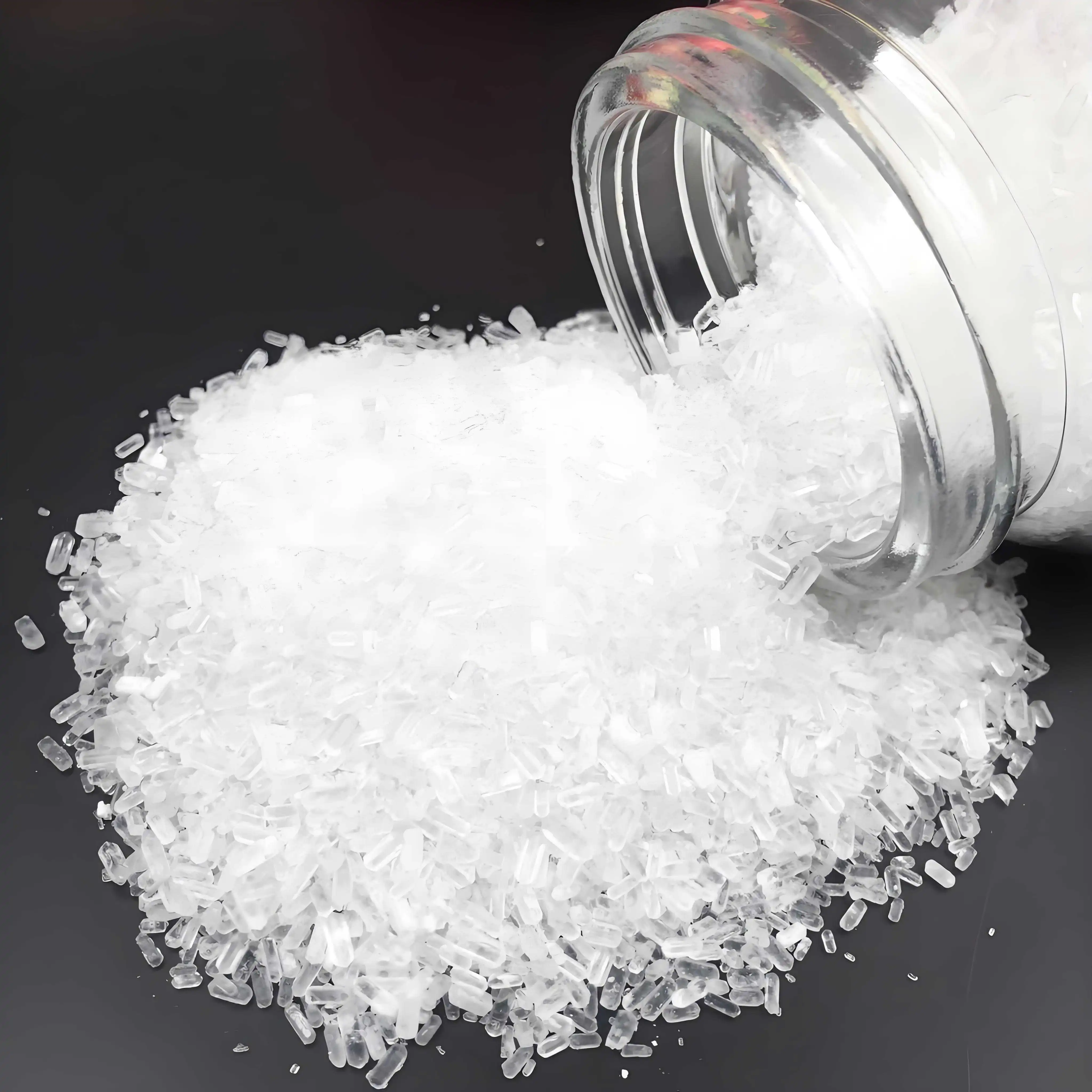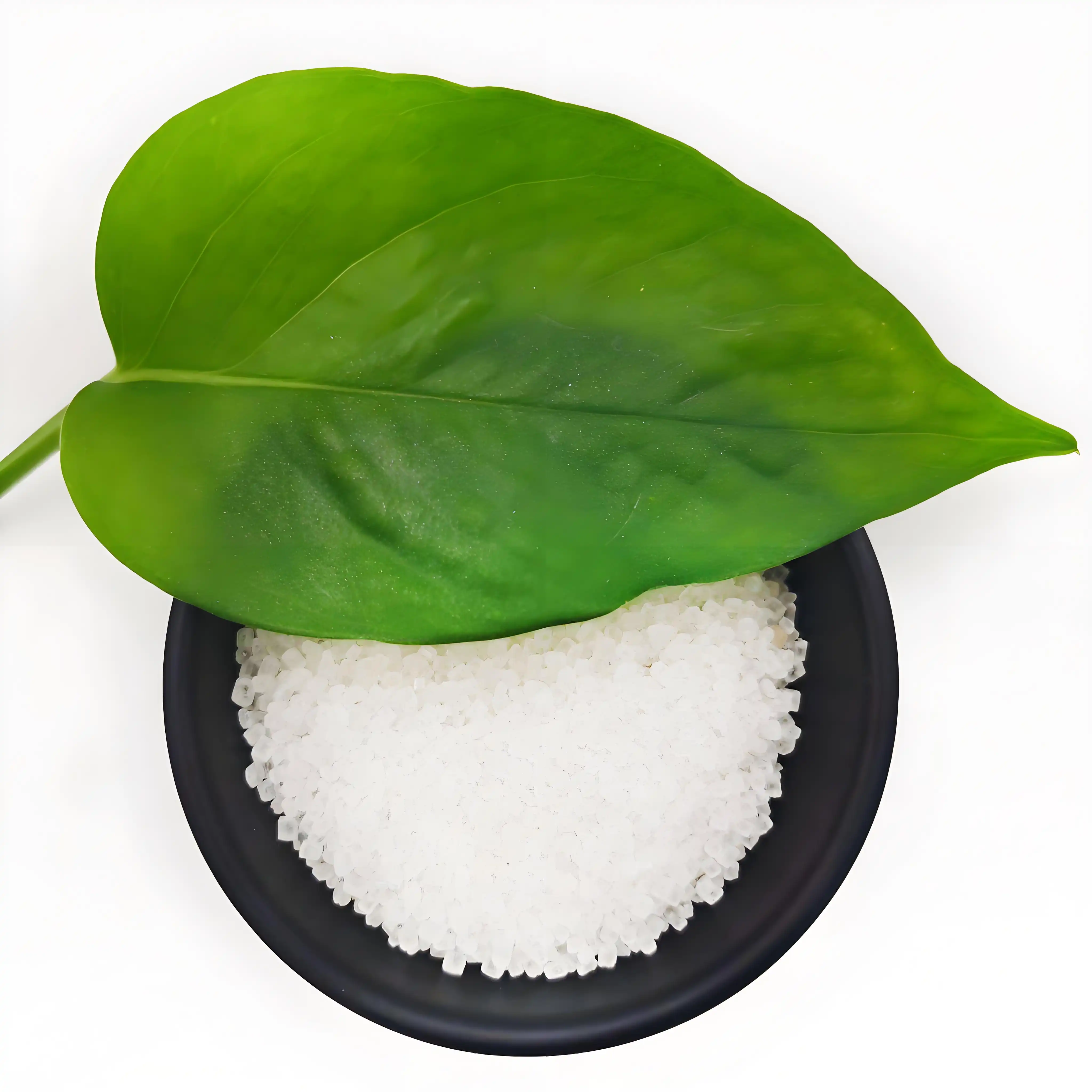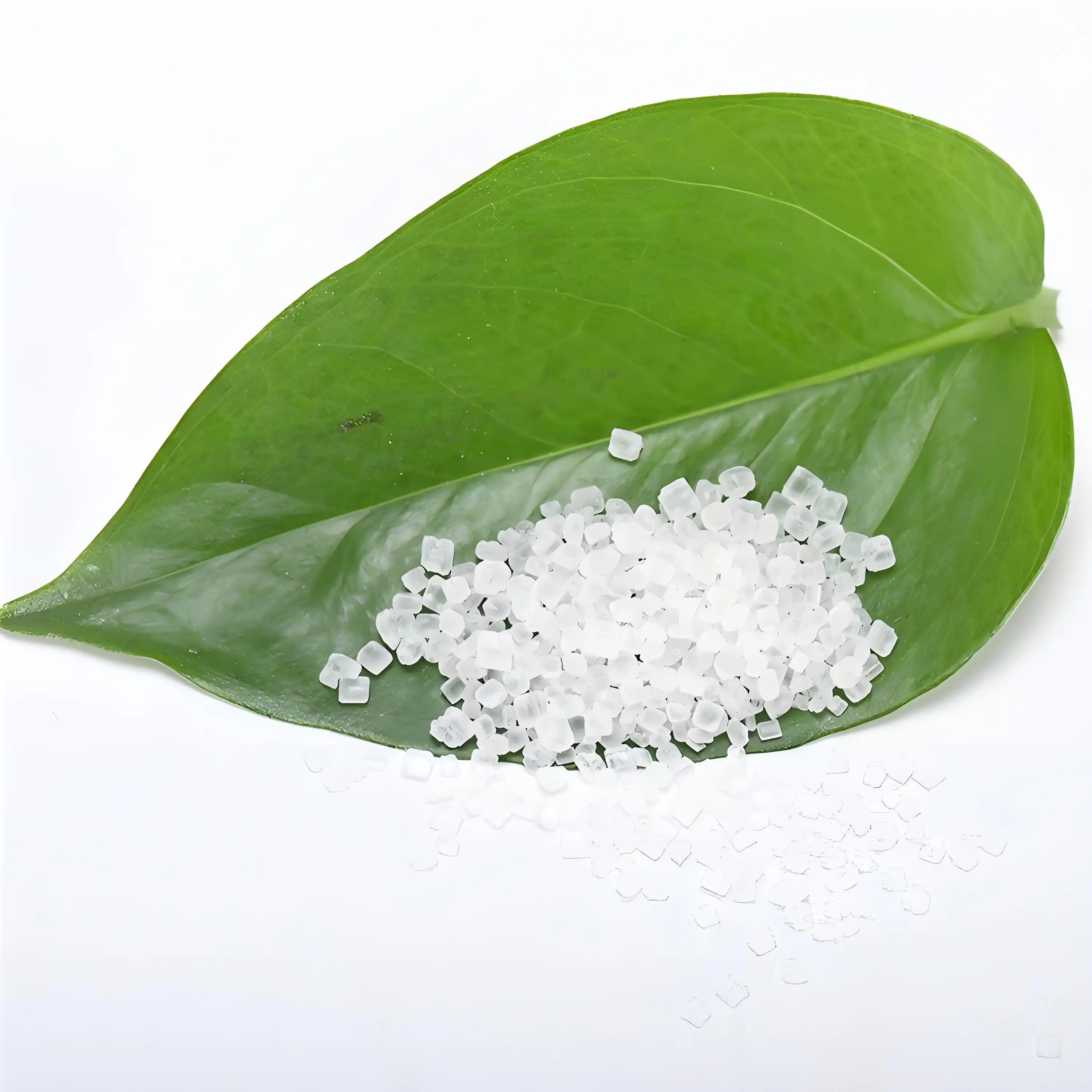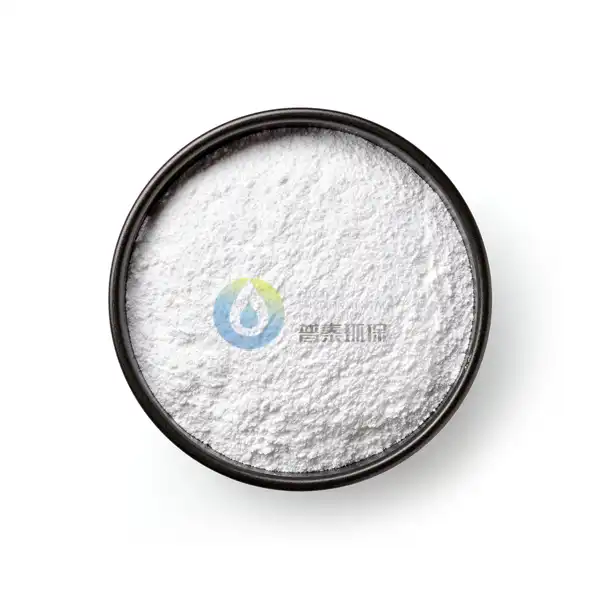Can Potassium Sulfate Fertilizer 0-0-53 be used in hydroponics?
Hydroponic gardening has gained significant popularity in recent years due to its efficiency and ability to grow plants without soil. As cultivators explore various nutrient solutions, a common question arises: Can Potassium Sulfate Fertilizer 0-0-53 be used in hydroponics? This blog post delves into the use of this high-potassium fertilizer in hydroponic systems, exploring its benefits, potential challenges, and best practices for implementation.
What are the benefits of using Potassium Sulfate Fertilizer 0-0-53 in hydroponic systems?
Enhanced Plant Growth and Development
Potassium Sulfate Fertilizer 0-0-53 is a powerful source of potassium, which plays a crucial role in plant growth and development. In hydroponic systems, where nutrient availability is carefully controlled, this fertilizer can significantly boost plant performance. The high concentration of potassium (53%) promotes stronger stems, improved root development, and enhanced overall plant structure. Additionally, potassium sulfate helps regulate water uptake and transpiration, leading to more efficient use of water and nutrients. This is particularly beneficial in hydroponic setups, where water management is critical. The sulfate component also contributes to chlorophyll formation and protein synthesis, further supporting robust plant growth.
Improved Fruit and Flower Quality
One of the standout benefits of using Potassium Sulfate Fertilizer 0-0-53 in hydroponics is its positive impact on fruit and flower quality. Potassium is essential for the development of flavorful, well-colored fruits and vibrant flowers. In hydroponic systems, where growers often aim for premium produce, this fertilizer can make a significant difference. The high potassium content enhances sugar translocation within plants, leading to sweeter fruits and more aromatic flowers. Moreover, potassium sulfate helps improve the shelf life of harvested produce, which is particularly valuable for commercial hydroponic operations. The sulfur component also contributes to the formation of essential oils in herbs and aromatic plants, enhancing their flavor profiles.
Increased Stress Tolerance
Hydroponic systems can sometimes expose plants to various stressors, such as fluctuations in temperature or pH levels. Potassium Sulfate Fertilizer 0-0-53 can play a crucial role in enhancing plants' stress tolerance. The high potassium content helps plants maintain proper water balance, making them more resilient to drought-like conditions that can occur if the hydroponic system malfunctions. Additionally, potassium strengthens cell walls, making plants more resistant to pests and diseases. This increased hardiness is particularly valuable in controlled environments like hydroponics, where maintaining optimal growing conditions is paramount. The sulfur component also aids in the production of certain amino acids that contribute to plant defense mechanisms, further bolstering their ability to withstand environmental stresses.
How should Potassium Sulfate Fertilizer 0-0-53 be applied in hydroponic systems?
Proper Dosage and Timing
When using Potassium Sulfate Fertilizer 0-0-53 in hydroponic systems, proper dosage and timing are crucial for optimal results. The exact amount needed will depend on factors such as plant type, growth stage, and overall nutrient requirements. Generally, it's recommended to start with a lower concentration and gradually increase as needed. For most hydroponic setups, a concentration of 1-2 grams per liter of water is a good starting point. However, it's essential to monitor plant response and adjust accordingly. Timing is equally important; potassium demands typically increase during the flowering and fruiting stages, so higher doses may be beneficial during these periods. Regular testing of the nutrient solution is crucial to maintain the right balance and prevent over-fertilization, which can lead to nutrient lockout or plant stress.
Mixing and Compatibility
Proper mixing of Potassium Sulfate Fertilizer 0-0-53 is essential for its effective use in hydroponics. The fertilizer should be thoroughly dissolved in water before adding it to the hydroponic system. It's important to note that potassium sulfate has low solubility compared to some other hydroponic fertilizers, so patience and proper mixing techniques are necessary. When combining with other nutrients, compatibility is a key consideration. Potassium sulfate generally mixes well with most other hydroponic nutrients but should not be combined with calcium-containing fertilizers in concentrated form to avoid precipitation. It's advisable to add potassium sulfate to the nutrient solution separately from calcium-rich compounds. Additionally, the use of Potassium Sulfate Fertilizer 0-0-53 may affect the pH of the nutrient solution, so regular pH monitoring and adjustment are crucial for maintaining optimal growing conditions.
Monitoring and Adjusting
Continuous monitoring and adjustment are essential when using Potassium Sulfate Fertilizer 0-0-53 in hydroponic systems. Regular testing of the nutrient solution's electrical conductivity (EC) and pH levels is crucial to ensure optimal nutrient uptake. The addition of potassium sulfate can increase the EC, so adjustments to other nutrients may be necessary to maintain the desired overall nutrient balance. Visual inspection of plants is also important; signs of potassium deficiency (such as yellowing or browning of leaf edges) or excess (like leaf tip burn) should prompt immediate adjustments to the fertilizer regimen. It's also worth noting that different plant species and even different growth stages may require varying levels of potassium. Therefore, a flexible approach to nutrient management is necessary when using Potassium Sulfate Fertilizer 0-0-53 in hydroponics, with regular tweaks based on plant performance and nutrient solution analysis.
What are potential challenges of using Potassium Sulfate Fertilizer 0-0-53 in hydroponics?
Nutrient Imbalances
While Potassium Sulfate Fertilizer 0-0-53 can be highly beneficial in hydroponic systems, it also poses the risk of creating nutrient imbalances if not used correctly. The high potassium content, while excellent for many aspects of plant growth, can potentially lead to deficiencies in other nutrients if not properly balanced. For instance, excessive potassium can interfere with the uptake of magnesium and calcium, leading to deficiencies in these essential nutrients. This is particularly critical in hydroponics, where plants rely entirely on the nutrient solution for their nutritional needs. Growers must be vigilant in monitoring overall nutrient levels and adjusting the composition of their nutrient solutions accordingly. Regular leaf tissue analysis can be helpful in detecting any imbalances early on, allowing for timely corrections to the fertilizer regimen.
pH Fluctuations
The use of Potassium Sulfate Fertilizer 0-0-53 in hydroponic systems can lead to pH fluctuations, which is a significant concern in these controlled environments. Potassium sulfate is considered a neutral salt, but its addition to water can slightly lower the pH over time. In hydroponics, where pH control is critical for nutrient availability and uptake, even small changes can have significant impacts. Plants typically prefer a slightly acidic pH range (5.5-6.5) for optimal nutrient absorption. Regular pH monitoring becomes even more crucial when using potassium sulfate, and growers may need to adjust their pH management strategies. This might involve more frequent use of pH adjusters or the implementation of automated pH control systems. It's also worth noting that different plant species may have varying pH preferences, so a one-size-fits-all approach may not be suitable when using Potassium Sulfate Fertilizer 0-0-53 across diverse hydroponic crops.
Potential for Overfertilization
The high potassium concentration in Potassium Sulfate Fertilizer 0-0-53 presents a risk of overfertilization in hydroponic systems if not managed carefully. Excess potassium can lead to various issues, including nutrient lockout, where the abundance of one nutrient prevents the uptake of others. Signs of potassium overfertilization include leaf tip burn, chlorosis, and stunted growth. In severe cases, it can lead to plant death. The risk is particularly high in closed hydroponic systems where nutrients are recirculated, as potassium levels can build up over time. To mitigate this risk, growers should implement a robust monitoring system, regularly testing both the nutrient solution and plant tissue. It may be necessary to periodically flush the system or adjust the nutrient solution to prevent potassium accumulation. Additionally, growers should be aware that different plant species and growth stages have varying potassium requirements, necessitating a flexible and attentive approach to fertilizer application.
Conclusion
Potassium Sulfate Fertilizer 0-0-53 can indeed be a valuable addition to hydroponic systems, offering numerous benefits for plant growth, fruit quality, and stress tolerance. However, its successful implementation requires careful management, including proper dosing, mixing, and continuous monitoring. While challenges such as nutrient imbalances, pH fluctuations, and the risk of overfertilization exist, these can be effectively managed with the right approach. By understanding both the advantages and potential pitfalls of using this high-potassium fertilizer, hydroponic growers can harness its benefits while mitigating risks, ultimately leading to healthier plants and higher yields in their soilless cultivation systems.
Xi'an Putai Environmental Protection Co., Ltd. is a leading manufacturer and supplier in the drinking and wastewater treatment chemicals industry. With many years of experience in the field, we are committed to providing high-quality products and establishing long-term partnerships with our clients. Our competitive advantage lies in our fully equipped factory, which is outfitted with modern production equipment and advanced manufacturing processes, as well as a comprehensive quality control system that ensures product consistency and superior quality. Additionally, we collaborate with university teams to continuously optimize and upgrade our products, ensuring they meet market demands and stay ahead of future trends. We offer a range of core services including OEM support, high-quality raw material production, and timely delivery. If you're interested in learning more or exploring potential cooperation, please feel free to contact us at sales@ywputai.com. We look forward to the opportunity to work with you.
References
1. Smith, J.K. (2021). Hydroponic Nutrient Management: Optimizing Plant Growth with Balanced Fertilizers. Journal of Soilless Cultivation, 15(3), 78-92.
2. Johnson, L.M., & Brown, T.R. (2020). The Role of Potassium in Hydroponic Systems: A Comprehensive Review. Advances in Horticultural Science, 8(2), 145-163.
3. Garcia-Lopez, R., et al. (2019). Potassium Sulfate vs. Other Potassium Sources in Hydroponic Tomato Production: Effects on Yield and Fruit Quality. HortScience, 54(6), 1036-1042.
4. Wilson, E.H. (2022). Challenges and Solutions in pH Management for Hydroponic Systems Using High-Concentration Fertilizers. Plant Nutrition Today, 12(1), 23-35.
5. Thompson, A.K., & Roberts, S.D. (2018). Nutrient Interactions in Hydroponic Solutions: Balancing Potassium with Other Essential Elements. Journal of Plant Nutrition, 41(14), 1789-1803.
6. Lee, Y.S., et al. (2020). Stress Tolerance in Hydroponic Lettuce: The Influence of Potassium Sulfate Fertilization. Environmental Control in Biology, 58(3), 87-96.
RECOMMENDATIONS
 VIEW MOREWholesale Ammonium Sulfate Fertilizer 21-0-0
VIEW MOREWholesale Ammonium Sulfate Fertilizer 21-0-0 VIEW MOREHigh Purity Ammonium Sulfate Fertilizer
VIEW MOREHigh Purity Ammonium Sulfate Fertilizer VIEW MORECaprolactam-Grade Ammonium Sulfate Fertilizer
VIEW MORECaprolactam-Grade Ammonium Sulfate Fertilizer_1729216561998.webp) VIEW MORESop Water Soluble Fertilizer
VIEW MORESop Water Soluble Fertilizer_1729216311056.webp) VIEW MOREPotassium Magnesium Sulfate Fertilizer
VIEW MOREPotassium Magnesium Sulfate Fertilizer_1729215837243.webp) VIEW MOREPotassium Sulfate Organic Fertilizer
VIEW MOREPotassium Sulfate Organic Fertilizer_1729215772183.webp) VIEW MOREPotassium Sulfate Fertilizer 0-0-53
VIEW MOREPotassium Sulfate Fertilizer 0-0-53 VIEW MOREOrganic Potassium Sulfate Fertilizer
VIEW MOREOrganic Potassium Sulfate Fertilizer_1729233544024.webp) VIEW MORESolid Potassium Sulfate Fertilizer
VIEW MORESolid Potassium Sulfate Fertilizer_1729215651315.webp) VIEW MOREFertilizer Potassium Sulfate
VIEW MOREFertilizer Potassium Sulfate_1729215530587.webp) VIEW MORESop Fertilizer
VIEW MORESop Fertilizer

